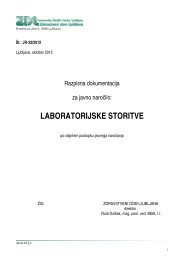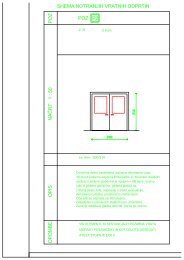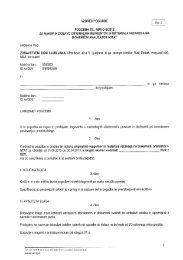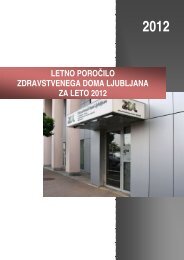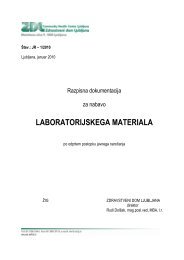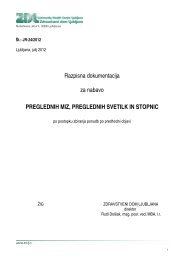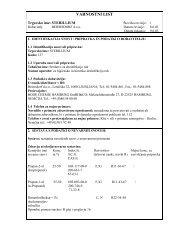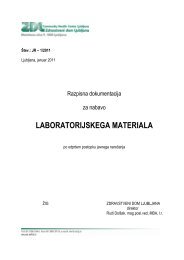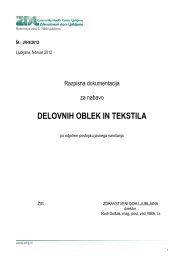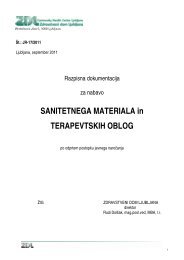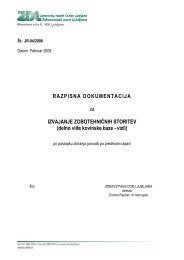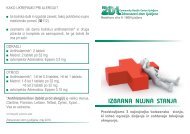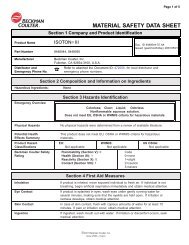harris hematoxylin
harris hematoxylin
harris hematoxylin
Create successful ePaper yourself
Turn your PDF publications into a flip-book with our unique Google optimized e-Paper software.
MANUFACTURER'S NAME (Distributor in the Americas)<br />
DATE PREPARED: June 26, 2003<br />
Thermo Electron Corporation<br />
SUPERSEDES: November 1, 2001<br />
Page 1 of 4<br />
ADDRESS (NUMBER, STREET, P.O. BOX)<br />
TELEPHONE NUMBER FOR INFORMATION<br />
171 Industry Drive (412) 788-1133<br />
(CITY, STATE AND ZIP CODE)<br />
Pittsburgh, PA 15275<br />
DISTRIBUTOR'S NAME (Outside the Americas)<br />
COUNTRY<br />
USA<br />
EMERGENCY TELEPHONE NUMBER<br />
CHEM • TEL (800) 255-3924 Outside USA (813) 248-0585<br />
Thermo Electron Corporation<br />
ADDRESS (NUMBER, STREET, P.O. BOX)<br />
TELEPHONE NUMBER FOR INFORMATION<br />
93/96 Chadwick Road, Astmoor<br />
+44 (0) 1928 562547<br />
(CITY, STATE AND ZIP CODE)<br />
Runcorn, Cheshire WA7 1PR<br />
COUNTRY<br />
United Kingdom<br />
EMERGENCY TELEPHONE NUMBER<br />
CHEM • TEL (813) 248-0585<br />
HAZARDOUS COMPONENTS<br />
Acidified<br />
Acetic acid ( a)<br />
Ethanol<br />
Un-Acidified<br />
Ethanol<br />
MATERIAL SAFETY DATA SHEET<br />
SECTION 1 - PRODUCT AND COMPANY IDENTIFICATION<br />
PRODUCT NAME: Shandon Harris Hematoxylin - Acidified; Un-Acidified<br />
PART NUMBER: 230006<br />
GENERAL USE: Blue nuclear stain for histology and cytology slide specimens.<br />
PRODUCT DESCRIPTION: Red to purple aqueous solution, characteristic odor<br />
Aluminum ammonium sulfate dodecahydrate<br />
Aluminum ammonium sulfate dodecahydrate<br />
(a) See Section 15<br />
SECTION 2 - HAZARDOUS INGREDIENTS<br />
%<br />
(by weight)<br />
CAS #<br />
EINECS #<br />
1 - 5 64-19-7<br />
200-580-7 C<br />
5 - 10 7784-26-1 not found Xi<br />
1 - 5 64-17-5 200-578-6 F<br />
3 - 7 7784-26-1 not found Xi<br />
1 - 5 64-17-5 200-578-6 F<br />
Hazard<br />
Symbol<br />
RISK PHRASES<br />
Full Text Section 16<br />
R-10, 35<br />
R-36/37/38<br />
R-11<br />
R-36/37/38<br />
R-11<br />
SECTION 3 - HAZARDS IDENTIFICATION<br />
EMERGENCY OVERVIEW<br />
Slightly acidic liquid, prolonged contact may cause skin & eye irritation. Ingestion may cause gastric distress. Hazard symbols for this product -<br />
Xi. Risk Phrases - R36/37/38<br />
POTENTIAL HEALTH EFFECTS<br />
INHALATION: Breathing concentrated vapors may cause irritation of respiratory tract.<br />
SKIN: Prolonged contact may cause irritation.<br />
EYES: Contact with eyes will cause irritation.<br />
INGESTION: May cause gastric distress, vomiting and diarrhea.<br />
CARCINOGENICITY NTP No IARC MONOGRAPHS No OSHA REGULATED No
MATERIAL SAFETY DATA SHEET<br />
PRODUCT NAME: Shandon Harris Hematoxylin - Acidified; Un-Acidified<br />
June 26, 2003<br />
SECTION 4 - FIRST AID MEASURES<br />
INHALATION: Remove affected person to fresh air; wash mouth and nasal passages with water repeatedly; if breathing difficulties persist seek<br />
medical attention.<br />
SECTION 5 - FIRE FIGHTING MEASURES<br />
Page 2 of 4<br />
SKIN: Wash contacted area with soap and water; DO NOT attempt to neutralize with chemical agents; if irritation persists, seek medical<br />
attention.<br />
EYES: Remove contact lenses. Immediately flush eyes for 15 minutes in clear running water while holding eyelids open; seek medical attention<br />
immediately.<br />
INGESTION: Drink two glasses of water followed by milk, milk of magnesia or other non-alcoholic liquids; DO NOT induce vomiting; never give<br />
anything by mouth to an unconscious person; seek medical attention immediately.<br />
GENERAL HAZARDS: Product is acidic. Products of combustion include compounds of carbon, hydrogen and oxygen, including carbon<br />
monoxide.<br />
EXTINGUISHING MEDIA<br />
Carbon dioxide, water, water fog, dry chemical, chemical foam<br />
FIRE FIGHTING PROCEDURES<br />
Keep containers cool with water spray to prevent container rupture due to steam buildup; floor will become slippery if material is released.<br />
Material is acidic and will irritate the eyes if product is allowed to directly contact the eyes.<br />
UNUSUAL FIRE AND EXPLOSION HAZARDS<br />
Contact with B:C extinguisher powder may produce large amounts of carbon dioxide.<br />
HAZARDOUS COMBUSTION PRODUCTS<br />
Smoke, fumes, oxides of carbon<br />
SECTION 6 - ACCIDENTAL RELEASE MEASURES<br />
STEPS TO BE TAKEN IN CASE MATERIAL IS RELEASED OR SPILLED: Material is acidic and will irritate the eyes if product is allowed to<br />
directly contact the eyes. Wash small spills to sanitary sewer. Large spills - confine spill, soak up with approved absorbent, shovel product into<br />
approved container for disposal. This is a regulated product, refer to CERCLA 40 CFR 302 for detailed instructions concerning reporting<br />
requirements.<br />
SECTION 7 - HANDLING AND STORAGE<br />
PRECAUTIONS TO BE TAKEN IN HANDLING AND STORAGE: Keep container closed when not in use; protect containers from abuse; protect<br />
from extreme temperatures.<br />
HAZARDOUS COMPONENTS<br />
SECTION 8 - EXPOSURE CONTROLS / PERSONAL PROTECTION<br />
NIOSH<br />
ACGIH<br />
TWA ppm TWA mg/m3 STEL ppm STEL mg/m3 TWA ppm TWA mg/m3 STEL ppm STEL mg/m3<br />
Acidified & Un-Acidified<br />
Acetic acid ( a) 25 37 25 37<br />
Aluminum ammonium sulfate dodecahydrate<br />
not established<br />
not established<br />
Ethanol -- -- -- -- 1000 1884 -- --<br />
PERSONAL PROTECTION:<br />
RESPIRATORY PROTECTION (SPECIFY TYPE): None required while threshold limits (Section 2) are kept below maximum allowable<br />
concentrations; if TWA exceeds limits, NIOSH approved respirator must be worn. Refer to 29 CFR 1910.134 or European Standard EN 149 for<br />
complete regulations.<br />
PROTECTIVE GLOVES: Neoprene or rubber gloves with cuffs.<br />
EYE PROTECTION: Protective eyeglasses or chemical safety goggles. Refer to 29 CFR 1910.133 or European Standard EN166.<br />
OTHER PROTECTIVE CLOTHING OR EQUIPMENT: Coveralls, apron, or other equipment should be worn to minimize skin contact.<br />
WORK / HYGIENIC PRACTICES: Practice safe workplace habits. Minimize body contact with this, as well as all chemicals in general.
MATERIAL SAFETY DATA SHEET<br />
PRODUCT NAME: Shandon Harris Hematoxylin - Acidified; Un-Acidified<br />
June 26, 2003<br />
SECTION 9 - PHYSICAL AND CHEMICAL PROPERTIES<br />
APPEARANCE AND ODOR<br />
VAPOR PRESSURE<br />
Red to purple liquid, odorless<br />
17 mm Hg @ 20º C<br />
pH<br />
SPECIFIC GRAVITY (WATER = 1)<br />
Acidified: 2.45 - 2.70; Un-Acidified: 2.55 - 2.75<br />
Not specified<br />
BOILING POINT / BOILING RANGE<br />
SOLUBILITY IN WATER<br />
211º F (99.4º C)<br />
Complete<br />
FLASH POINT<br />
VISCOSITY<br />
Non-flammable<br />
Not specified<br />
FLAMMABLE LIMITS VAPOR DENSITY (AIR = 1)<br />
LEL: Not applicable UEL: Not applicable > 1<br />
AUTOIGNITION TEMPERATURE<br />
EVAPORATION RATE (WATER = 1)<br />
Not determined < 1<br />
SECTION 10 - STABILITY AND REACTIVITY<br />
STABILITY<br />
UNSTABLE:<br />
CONDITIONS TO AVOID: Extreme temperatures<br />
STABLE: XXX<br />
INCOMPATIBILITY (MATERIALS TO AVOID): Strong oxidizers, strong acids, strong alkalies<br />
Page 3 of 4<br />
HAZARDOUS DECOMPOSITION OR BYPRODUCTS: Decomposition will not occur if handled and stored properly. In case of a fire, oxides of<br />
carbon, hydrocarbons, fumes, and smoke may be produced.<br />
HAZARDOUS POLYMERIZATION MAY OCCUR:<br />
CONDITIONS TO AVOID: None<br />
WILL NOT OCCUR: XXX<br />
Acidified<br />
Acetic acid ( a)<br />
Hazardous Components<br />
Aluminum ammonium sulfate dodecahydrate<br />
Ethanol<br />
Un-Acidified<br />
Aluminum ammonium sulfate dodecahydrate<br />
Ethanol<br />
PROPER SHIPPING NAME:<br />
DOT HAZARD CLASS / Pack Group:<br />
REFERENCE:<br />
UN / NA IDENTIFICATION NUMBER:<br />
LABEL:<br />
HAZARD SYMBOLS:<br />
SECTION 11 - TOXICOLOGICAL INFORMATION<br />
Not Regulated<br />
Not regulated<br />
Not Applicable<br />
None<br />
None Required<br />
None<br />
CAS #<br />
EINECS #<br />
64-19-7<br />
200-580-7<br />
7784-26-1<br />
not found<br />
64-17-5<br />
200-578-6<br />
7784-26-1<br />
not found<br />
64-17-5<br />
200-578-6<br />
LD50 of Ingredient<br />
(Specify Species and Route)<br />
3310 mg / kg<br />
Oral - rat<br />
Not established<br />
3450 mg / kg<br />
Oral - mouse<br />
Not established<br />
3450 mg / kg<br />
Oral - mouse<br />
SECTION 12 - ECOLOGICAL INFORMATION<br />
SECTION 13 - DISPOSAL CONSIDERATIONS<br />
LC50 of Ingredient<br />
(Specify Species)<br />
5620 ppm / 1H<br />
Inhalation - rat<br />
Not established<br />
20,000 ppm / 10H<br />
Inhalation - rat<br />
20,000 ppm / 10H<br />
Inhalation - rat<br />
No data are available on the adverse effects of this material on the environment. Neither COD nor BOD data are available. Based on the<br />
chemical composition of this product it is assumed that the mixture can be treated in an acclimatized biological waste treatment plant system in<br />
limited quantities. However, such treatment should be evaluated and approved for each specific biological system. None of the ingredients in<br />
this mixture are classified as a Marine Pollutant.<br />
WASTE DISPOSAL METHOD: According to the European Waste Catalogue, waste codes are application specific and should be assigned by<br />
the user based on the application for which the product is used.Dispose of in accordance with Local, State, and Federal Regulations. Refer to<br />
"40 CFR Protection of Environment Parts 260 - 299" for complete waste disposal regulations for acidic materials. Consult your local, state, or<br />
Federal Environmental Protection Agency before disposing of any chemicals.<br />
SECTION 14 - TRANSPORT INFORMATION<br />
Not established<br />
IATA HAZARD CLASS / Pack Group: Not regulated<br />
IMDG HAZARD CLASS: Not regulated<br />
RID/ADR Dangerous Goods Code: Not regulated<br />
UN TDG Class / Pack Group: Not regulated<br />
Note: Transportation information provided is for reference only. Client is urged to consult CFR 49 parts 100 - 177, IMDG, IATA, EU, United<br />
Nations TDG, and WHMIS (Canada) TDG information manuals for detailed regulations and exceptions covering specific container sizes,<br />
packaging materials and methods of shipping.
MATERIAL SAFETY DATA SHEET<br />
PRODUCT NAME: Shandon Harris Hematoxylin - Acidified; Un-Acidified<br />
June 26, 2003<br />
SECTION 15 - REGULATORY INFORMATION<br />
TSCA (USA - Toxic Substance Control Act)<br />
All components of this product are listed on the U.S. Toxic Substances Control Act Chemical Inventory (TSCA Inventory) or are exempted from<br />
listing because a Low Volume Exemption has been granted in accordance with 40 CFR 723.50.<br />
SARA TITLE III (USA - Superfund Amendments and Reauthorization Act)<br />
311/312 Hazard Categories<br />
Immediate health hazard<br />
Page 4 of 4<br />
313 Reportable Ingredients:<br />
None<br />
CERCLA (USA - Comprehensive Response Compensation and Liability Act)<br />
(a) The Comprehensive Environmental Response, Compensation, and Liability Act (CERCLA) has notification requirements for releases or<br />
spills to the environment of the Reportable Quantity (RQ for this mixture > 24000 lbs) or greater amounts, according to 40 CFR 302.<br />
CPR (Canadian Controlled Products Regulations)<br />
This product has been classified in accordance with the hazard criteria of the Controlled Products Regulations and the MSDS contains all the<br />
information required by the Controlled Products Regulations.<br />
IDL (Canadian Ingredient Disclosure List)<br />
Components of this product identified by CAS number and listed on the Canadian Ingredient Disclosure List are shown in Section 2.<br />
DSL / NDSL (Canadian Domestic Substances List / Non-Domestic Substances List)<br />
Components of this product identified by CAS number are listed on the DSL or NDSL and may or may not be listed in Section 2 of this<br />
document. Only ingredients classified as "hazardous" are listed in Section 2 unless otherwise indicated.<br />
EINECS (European Inventory of Existing Commercial Chemical Substances)<br />
Components of this product identified by CAS numbers are on the European Inventory of Existing Commercial Chemical Substances.<br />
WGK Water Quality Index: 1<br />
RISK PHRASES:<br />
R36/37/38 Irritating to eyes, respiratory system<br />
and skin<br />
SYMBOL(S) REQUIRED<br />
FOR LABEL<br />
Irritant<br />
SAFETY PHRASES:<br />
S26 In case of contact with eyes, rinse immediately with plenty<br />
of water and seek medical advice.<br />
Notes & full R-Phrase text<br />
SECTION 16 - OTHER INFORMATION<br />
R10 Flammable.<br />
R11 Highly flammable.<br />
R35 Causes severe burns.<br />
R36/37/38 Irritating to eyes, respiratory system and skin<br />
HMIS HAZARD RATINGS<br />
HEALTH<br />
FLAMMABILITY<br />
REACTIVITY<br />
PERSONAL PROTECTIVE EQUIPMENT<br />
1<br />
0<br />
0<br />
C<br />
0 = INSIGNIFICANT<br />
1 = SLIGHT<br />
2 = MODERATE<br />
Safety Glasses, Gloves, Apron<br />
3 = HIGH<br />
4 = EXTREME<br />
REVISION SUMMARY:<br />
This MSDS has been revised in the following<br />
sections:<br />
No revisions available<br />
MSDS Prepared by:<br />
Chem-Tel, Inc.<br />
1305 N. Florida Ave.<br />
Tampa, Florida USA 33602 (800) 255-3924 Outside USA (813) 248-0573<br />
The information contained herein is believed to be accurate but is not warranted to be so. Data and calculations are based on information furnished by the<br />
manufacturer of the product and manufacturers of the components of the product. Users are advised to confirm in advance of need that information is current,<br />
applicable and suited to the circumstances of use. Vendor assumes no responsibility for injury to vendee or third persons proximately caused by the material if<br />
reasonable safety procedures are not adhered to as stipulated in the data sheet. Furthermore, vendor assumes no responsibility for injury caused by abnormal use of<br />
this material even if reasonable safety procedures are followed. Any questions regarding this product should be directed to the manufacturer of the product as<br />
described in Section 1.



